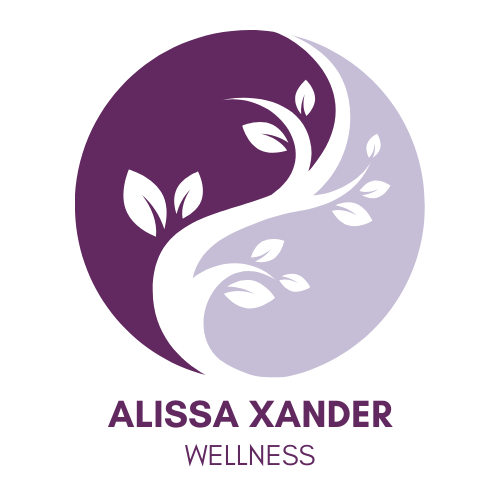Strength for Life: The Holistic Approach to Aging Gracefully

If you’ve been following my journey, you probably already know about my love for running and the incredible places it has taken me, from Boston to New York City and Chicago. But today, let’s set aside the running shoes for a moment and dive into a topic that’s incredibly important, especially as we get older: strength training.
Strength training is vital to holistic well-being, particularly as we age. While activities like running and walking offer tremendous cardiovascular benefits, holistic health teaches us that there’s more to aging gracefully than just endurance. Strength training complements these activities by enhancing our overall physical capabilities and resilience.
Aging and Muscle Loss: The Unseen Battle
As we journey through life, we face a silent adversary: muscle loss. Did you know that we lose about 10% of our muscle mass every decade, starting around the age of 30? This gradual decline, known as sarcopenia, affects our bodies in ways we might not realize.
Sarcopenia is a pervasive issue among aging adults, with far-reaching consequences. This muscle loss might not be immediately apparent, but its impact becomes increasingly significant as we age. According to studies, by the age of 60, an individual may have lost up to 20% of their muscle mass. This loss affects everything from daily functionality to long-term health.
Weight Management
The metabolic implications of muscle loss are profound. Muscle tissue is metabolically active and consumes more calories even when we’re at rest.
Research indicates that each pound of muscle burns approximately six calories daily at rest, while a pound of fat burns just two calories. Over time, this difference adds up, affecting our ability to maintain a healthy weight. So, even if you’re eating the same as you used to, you might find it harder to manage your weight.

Reduced Strength and Independence
The consequences of muscle loss extend to our independence and quality of life. As we age, diminished muscle strength can result in difficulties with essential daily activities, such as getting up from a chair, lifting groceries, or even maintaining balance while walking.
Statistics from the Centers for Disease Control and Prevention (CDC) show that falls, often related to reduced muscle strength and balance, are the leading cause of injury-related deaths among older adults.
Increased Risk of Chronic Conditions
The correlation between muscle loss and chronic conditions is well-documented. Research highlights that sarcopenia contributes to insulin resistance, a key factor in developing type 2 diabetes.
Moreover, weakened muscles can intensify the symptoms of conditions like arthritis and lower back pain, diminishing one’s overall quality of life. It’s essential to recognize that muscle health plays a pivotal role in preventing and managing these conditions.
Strength Training: The Key to Aging Well
Strength training isn’t just about building muscles; it’s about building resilience and maintaining functionality. Studies consistently demonstrate that resistance training can increase muscle mass and strength, regardless of age. So, it’s never too late to get started.
Additionally, it enhances bone density, reducing the risk of osteoporosis, and supports joint health. These factors collectively contribute to a better quality of life as we age, ensuring we can continue engaging in the activities we love.

Incorporating Strength Training into Your Life
Integrating strength training into your daily life doesn’t need to be complicated. These three approaches cater to different preferences and fitness levels.
- Bodyweight exercises, such as squats and push-ups, provide a foundation for beginners and can be done virtually anywhere.
- Resistance bands, known for their convenience and effectiveness, offer a gentle introduction to muscle building.
- Finally, free weights or machine-based workouts provide progressive resistance, ensuring continued growth and adaptation as you advance in your strength training journey.
Benefits of Strength Training
The evidence is clear: strength training is a key factor in enhancing the quality of life as we age. Studies have indicated that individuals who incorporate strength training into their routines experience improved physical function, better mental health, and reduced risk of chronic diseases. These benefits extend beyond merely adding years to our lives; they add vitality and the ability to savor life’s pleasures well into our golden years.

In conclusion, the journey towards aging gracefully is enriched by incorporating strength training. It’s not merely a suggestion but a well-founded strategy backed by research and real-world results.
As we navigate the path of life, embracing strength training is an empowering choice. I’m here to guide and support you if you’re ready to take this step towards a healthier and more resilient future.
Together, we can embrace the beauty of aging with strength, vitality, and a profound sense of empowerment.
PS – When you’re ready… Here are 4 ways I can help you shift from settling for the results you’re getting to feeling stronger and more resilient than ever!
- Go Beyond the Scale: 3 Secrets to Ageless Vitality. Join me for this free masterclass on Wednesday, October 16th.
- Be a part of a community of people taking control of their health holistically in my private FB group, Defy Your Age. You’ll get access to some of my hottest tips, video teachings, recipes, and more!
- Join me for a live yoga class from the comfort of your own home. Check out the online class schedule and sign up!
- Work with me to step off the health rollercoaster. Send me an email with the words “I’m ready” in the subject line so we can set up a time to chat about your goals.
